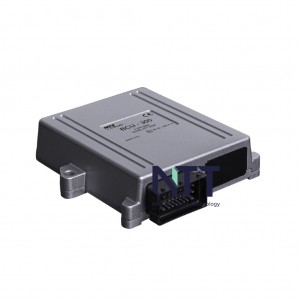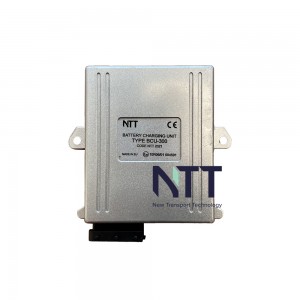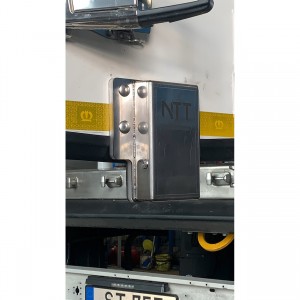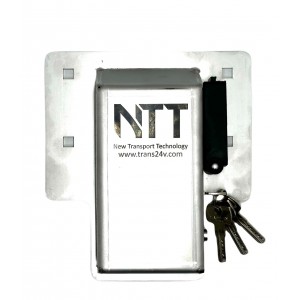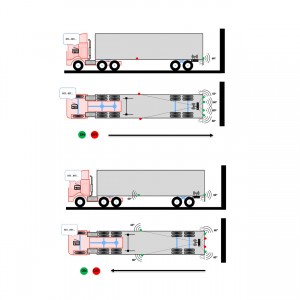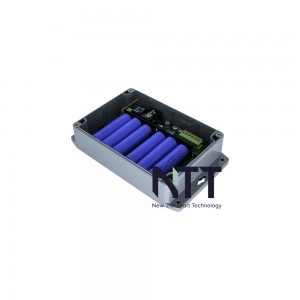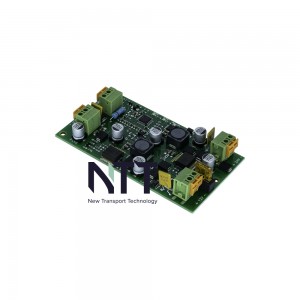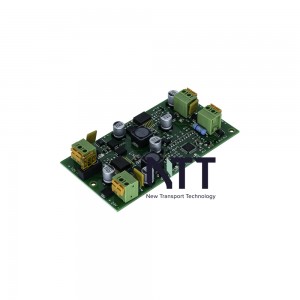UPDATE 2024: Direct Vision Standard system for Trucks

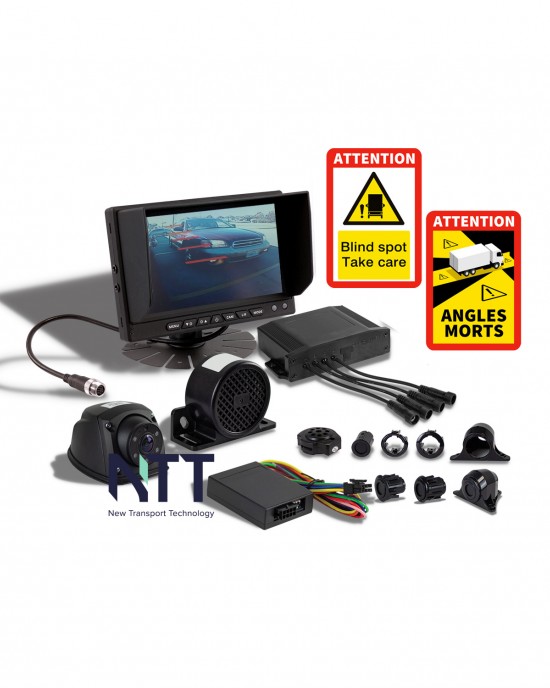


- Stock status: In Stock
- Model: DVS-4.1
- Shipping Weight: 3.00kg
- Dimensions: 30.00cm x 20.00cm x 10.00cm
- SKU: DVS-4.1
- MPN: DVS-4.1
Update on DVS System: TfL Announces Changes for 2024
TfL has unveiled updates to the Direct Vision Standard (DVS) for 2024. Effective October 28, 2024, a minimum DVS rating of three stars will be required in London, up from one star. Fleet operators must ensure their vehicles are equipped with Moving Off Information System (MOIS) and Blind Spot Information System (BSIS) by this date to receive permits. Introducing our Progressive Safe System (DVS NTT 2024) to meet these new requirements. Contact us to order today.

Direct Vision Standard (DVS) until October 2024
Since March 2021, the Direct Vision Standard (DVS) has been enforced in London, introduced to improve road safety and reduce the risk of collisions with pedestrians and cyclists. According to this standard, all goods vehicles weighing over 12 tonnes must be allowed to enter the Greater London area and must comply with the DVS standard.
Our clients often face serious issues:
1. Inadequate visibility from the driver's cab: Reduced visibility from the truck cabin can lead to dangerous situations on the road as drivers may not always see surrounding road users.
2. Increased risk of collisions with pedestrians and cyclists: Inadequate visibility can increase the risk of collisions with pedestrians and cyclists, especially in urban environments where space is limited.
3. High medical and insurance expenses: Accidents and run-overs can result in significant medical and insurance expenses, negatively impacting clients' finances.
4. Penalties for non-compliance with safety standards: Failure to comply with safety standards and requirements, such as the DVS standard, can result in penalties for clients.
5. Driver dissatisfaction: Driver dissatisfaction can affect the productivity and efficiency of delivery operations, ultimately impacting customer service.
6. Risk to reputation and customer base: Incidents related to road safety and delivery can affect the reputation of clients and their ability to attract new customers.
7. Risk of disrupting business processes due to delayed and poor-quality deliveries with additional expenses: Delayed and poor-quality deliveries can disrupt clients' business processes and increase overall operating costs.

Our solution: Direct Vision Standard (DVS) system:
1. DVS compliance check: We will check if your vehicle complies with DVS.
2. Installation of required equipment: In case of non-compliance, we will install the necessary additional equipment.
3. Comprehensive DVS installation:
- Installation of 4 proximity sensors with an audible warning to the driver about the presence of road users in the blind spot to the right of the truck.
- Installation of a side-view monitoring camera with an 8-inch monitor inside the cabin.
- External right-turn sounder with a manual disable button inside the cabin.
- System that automatically deactivates when the speed exceeds 35 km/h, reducing distraction.
- Warning signs and informational stickers on the doors.

Advantages to the client using the DVS system:
1. Protect against accidents and injuries: DVS helps prevent collisions and injuries, protecting both drivers and other road users from the serious consequences of accidents while maneuvering.
2. Certified entry into London: The vehicle will be certified and included in the list for entry into London, making it easy to access the city.
3. Avoid fines: Without DVS certification, automatic number plate recognition cameras will detect the violation and issue warnings of fines. This can result in a fine of £550 per day for the carrier and £130 for the truck driver.
4. Improve fleet safety: DVS installation demonstrates your responsibility as an employer and helps improve the safety of your fleet.
5. Reduce insurance payouts and expenses: By improving vehicle safety with DVS, you can reduce the number of insurance payouts and improve the quality of insurance policies, which can ultimately save a lot of money.
6. Guaranteed certification: We guarantee that after installing our system, your vehicle will receive a TFL permit, and we provide free consultation to ensure this.
7. Success story: Girteka successfully installed our system in hundreds of their trucks and obtained permission to enter London, which helped retain clients, attract new ones, and improve insurance conditions.
Main Features
Direct Vision Standard and HGV Safety Permit
The DVS system proudly complies with strict standards set out in the UK's Direct Vision Standard and Heavy Goods Vehicles Safety Permit regulations. Our system is designed not only to comply with but to exceed these standards, ensuring that HGV operators can confidently navigate the roads, prioritizing the safety of all road users. With DVS, you're not just following the rules; you're setting a new standard for safety and awareness in the transport industry.
Specification
| Model | DVS-4.1 |
|---|---|
| Shipping Weight (kg) | 3.00 |
| Dimensions | 30.00 cm x 20.00 cm x 10.00 cm |
| Input Voltage (V) | 24 |
| Power Consumption (mA) | 10 |
Main Components of the DVS System
- Cabin-Mounted Monitor - 7 inches
- Cabin Sensor Audible Alert
- High-Resolution Side Blind Spot Camera
- Side Detection Sensors for Pedestrian and Cyclist Location in Blind Spots
- External Vehicle Sound Indicator for Turns - 90 dB
- CAN BUS On/Off Controller
- Switches, Mounting Connectors, Mounting Hardware
Include a schematic construction image with numbers


1) Cabin-Mounted Monitor - 7 inches
Description: The 7-inch cabin-mounted monitor is a high-resolution, 7-inch screen integrated into the DVS system, designed to provide real-time visual information to the truck driver about the surrounding environment, including blind spots and potential obstacles.
Purpose: The main purpose of the 7-inch cabin-mounted monitor is to enhance the driver's situational awareness by providing a clear and comprehensive view of the truck's surroundings. This visual feedback helps the driver make informed decisions, significantly improving road safety and reducing the risk of accidents.


2) Cabin Sensor Audible Alert
Description: The in-cab sensor audible alert for the driver is an integrated component of the DVS system, emitting audible warnings within the truck cabin. It is specifically designed to inform the driver about potential obstacles or dangers detected in the truck's blind spots.
Purpose: The main purpose of the in-cab sensor audible alert is to provide the driver with real-time audible warnings, enhancing their understanding of surrounding hazards and encouraging quick and effective responses. By alerting the driver to potential dangers, it significantly contributes to the overall safety of the truck and its occupants, as well as pedestrians and cyclists.
3) High-Resolution Side Blind Spot Camera
Description: The high-resolution side blind spot camera is a sophisticated optical device integrated into the DVS system, capable of capturing and transmitting high-resolution video recordings of the truck's blind spots, especially on the sides of the vehicle.
Purpose: The primary purpose of the high-resolution side blind spot camera is to eliminate the truck driver's blind spots by providing real-time visual information about areas that would otherwise be invisible. This critical tool enhances road safety by enabling the driver to make informed decisions, prevent accidents, and protect pedestrians and cyclists from potential harm.



4) Side Detection Sensors for Pedestrian and Cyclist Location in Blind Spots
Description: The DVS system's side detection sensors are advanced sensors strategically placed to monitor blind spots near the truck. These sensors utilize state-of-the-art technology to detect the presence of pedestrians and cyclists in areas typically hidden from the driver's line of sight.
Purpose: The primary purpose of the side detection sensors is to increase traffic safety by alerting the driver to pedestrians and cyclists in blind spots. By providing real-time information about potential hazards, these sensors enable the driver to take precautionary measures, ultimately reducing the risk of accidents and ensuring the well-being of vulnerable road users.
5) External Vehicle Sound Indicator for Turns - 90 dB
Description: The external vehicle sound indicator for turns in the DVS system is a powerful sound warning system emitting a 90 dB signal. It is designed to alert nearby pedestrians and cyclists when the truck is making a turn or maneuver, ensuring they are aware of potential dangers.
Purpose: The primary purpose of the turn signal sound indicator is to increase the safety of pedestrians and cyclists by providing a clear and unmistakable audible warning when the truck is in motion. This helps prevent accidents and promotes safer interactions between large vehicles and vulnerable road users, ultimately reducing the risk of collisions and injuries.
6) CAN BUS On/Off Controller
Description: The DVS system's CAN BUS on/off controller is a specialized electronic component responsible for controlling the system's activation and deactivation. It interfaces with the vehicle's CAN bus system to automatically activate the DVS system when the truck's speed drops below 35 km/h and deactivate it when the speed exceeds this limit.
Purpose: The main purpose of the CAN BUS on/off controller is to ensure seamless integration of the DVS system with truck operations. By automatically activating the system at lower speeds and deactivating it at higher speeds, this controller reduces driver intervention, enhances safety, and optimizes system efficiency when needed most, such as during maneuvers or in congested traffic.
7) Switches, Mounting Connectors, Mounting Hardware
Description: The switches, mounting connectors, and mounting hardware of the DVS system are essential technical equipment components, facilitating system installation, operation, and secure positioning. They include user-accessible control switches, connectors for electrical connections, and mounting hardware for securely attaching system elements.
Purpose: These components serve a vital purpose in the DVS system by ensuring easy installation and reliable functionality. The switches enable user control, connectors facilitate smooth communication between system elements, and mounting hardware ensures system stability and longevity, collectively contributing to increased safety and operational efficiency on the road.
| Company Code | Pcs. | Description |
|---|---|---|
| K-4100 | 1 | 7-foot (inch) Monitor |
| K-…. | 1 | Monitor Power Cables - 1 (when purchased from UAB “Clavis auto” a new code will be assigned) |
| K-4101 | 1 | Video Camera |
| K-4397 | 1 | Parking System Keetec BS420 (parking sensors - 4 touch distance sensor system) |
| K-4099 | 1 | Reverse Gear Signal GR03 - 1 |
| K-433 | 1 | Speed Sensor Board Node (speed switch 35 km/h AB-01n) |
| K-4567 | 2 | OFF-ON Button 20A/14V DC SPST green LED R13-112B2-02-BBG |
| K-4066 | 6 | Socket 4.8mm red wire 0.5-1.5mm2 (with UAB Lemona contacts) |
| K-4102 | 1 | Connector for 1 euro. excl. VAT |
| K-4103 | 1 | Connector for 4 euros. excl. VAT |
| K-4455 | 1 | Extension Cable - 1 set (1 set 4 DVS) |
| K-4364 | 1 | USB 2.0 plastic holder |
UK Direct Vision Standard and Heavy Goods Vehicle Safety Permit Rules
Comparison of the DVS system with the PSS (Public Service Vehicles Safety Standard) requirements summary:
1. Camera monitoring system: The DVS system complies with the PSS requirement for a camera monitoring system, which eliminates blind spots. This is achieved by providing high-resolution side blind spot cameras, which effectively eliminate blind spots next to the vehicle.
2. Mirrors or camera monitoring: The DVS system offers a camera monitoring system that effectively replaces traditional mirrors. This function meets the PSS requirement for Class V and VI mirrors or camera monitoring systems, which replace mirrors, or a combination of both.
3. Blind spot information system: The DVS system has a blind spot information system with active sensors that alert the driver to the presence of vulnerable road users, ensuring compliance with PSS requirements applicable to such a system alongside the vehicle.
4. Movement information system: While the DVS system primarily focuses on movement safety, it supplements the PSS requirement applicable to the movement information system, enhancing driver understanding through camera and sensor-based functions.
5. Audible warning during turning: The DVS system provides an audible turning signal beyond the vehicle, ensuring compliance with the PSS requirement for audible warning of vehicle maneuvering on left turns.
6. Visual warnings: The DVS system includes external visual decals and markings.
In summary, it can be said that the DVS system meets the main requirements outlined in the PSS, particularly those related to camera monitoring, blind spot information systems, audible warnings during turns, and increasing driver awareness of vulnerable road users.
| Thumb | File information |
|
|
NTT DVS 2024 RUS .pdf File Size1.14MB Downloaded: 0 |
|
|
NTT DVS 2024 ENG.pdf File Size1.1MB Downloaded: 0 |
|
|
NTT DVS 2024 LT.pdf File Size1.09MB Downloaded: 0 |
|
|
DVS Installation until 2024 LT.pdf File Size808.43KB Downloaded: 0 |
|
|
DVS Installation until 2024 RUS.pdf File Size942.83KB Downloaded: 0 |
|
|
DVS Installation until 2024 ENG.pdf File Size778.18KB Downloaded: 0 |

